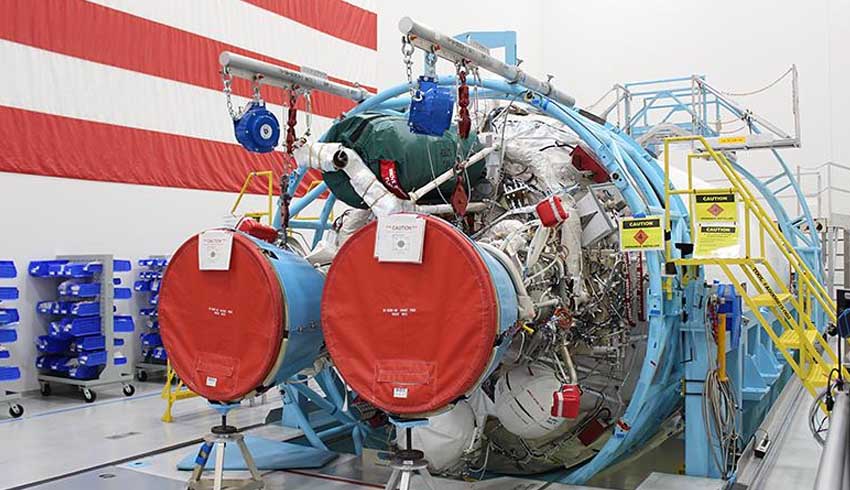Designed to better understand the geology of Mars and seek signs of ancient life, Perseverance will ultimately make discoveries to pave the way for human exploration of Mars.
Aerojet Rocketdyne CEO and president Eileen Drake said, “Perseverance will rely on Aerojet Rocketdyne propulsion during the launch, entry, descent and landing phases of the mission, and Aerojet Rocketdyne power during the collection portion of the mission.”
Perseverance will launch aboard a ULA Atlas V rocket in the 541 configuration, employing a number of Aerojet Rocketdyne motors, engines and tanks:
- Four AJ-60A solid rocket motors manufactured in Sacramento, California, are on the Atlas V’s first stage and will provide 1,394,000 pounds of thrust to lift the vehicle off the launch pad;
- A single RL10C-1 Centaur upper stage engine built in West Palm Beach, Florida, will propel Perseverance on a trajectory to Mars after first stage separation;
- 12 MR-106 reaction control system thrusters made in Redmond, Washington, will provide pitch, yaw and roll control for the Atlas V’s Centaur upper stage, as well as settling burns for the RL10 engine;
- Six tanks built by Aerojet Rocketdyne subsidiary ARDÉ in Carlstadt, New Jersey, will store high-pressure helium used to pressurise propellant tanks on the launch vehicle’s first and second stages to feed propellant to the engines; and
- Two tanks also built by ARDÉ will store high-pressure helium to pressurise the lander/descent propulsion system.
"Aerojet Rocketdyne engines have flown aboard and enabled every successful NASA Mars mission to date and we’re confident that Perseverance will soon join its predecessors in making amazing discoveries,” Drake added.
After the spacecraft separates from the Centaur upper stage, it will begin its roughly seven-month journey to Mars.
Aerojet Rocketdyne propulsion is also employed on Perseverance’s spacecraft, aiding the entry, descent and landing phases of the mission.
Eight MR-107U thrusters will stabilise the spacecraft during its entry into Martian atmosphere, and eight MR-80B throttling descent thrusters on the descent stage will power the sky crane as it lowers the rover onto the surface and then fly the stage a safe distance away. These in-space thrusters are also produced at the company’s facility in Redmond, Washington.
Once the Perseverance rover is safely on the surface of Mars, it will begin preparations for its roughly two-year sample collection mission.
Aerojet Rocketdyne provides the Multi-Mission Radioisotope Thermoelectric Generator (MMRTG) that will provide power to the rover and its various instruments throughout surface operations. The MMRTG is built at Aerojet Rocketdyne’s facility in Los Angeles, California.
Aerojet Rocketdyne, a subsidiary of Aerojet Rocketdyne Holdings, is a world-recognised aerospace and defence leader that provides propulsion systems and energetics to the space, missile defence and strategic systems, and tactical systems areas, in support of domestic and international customers.

